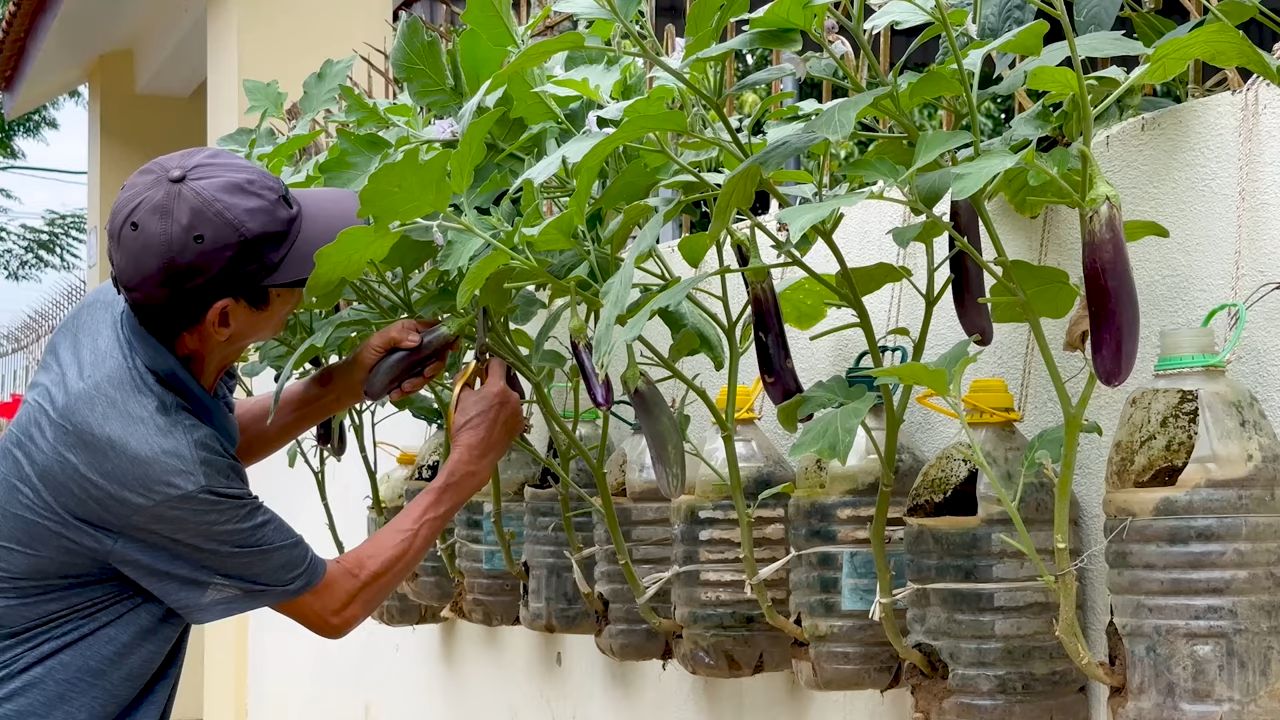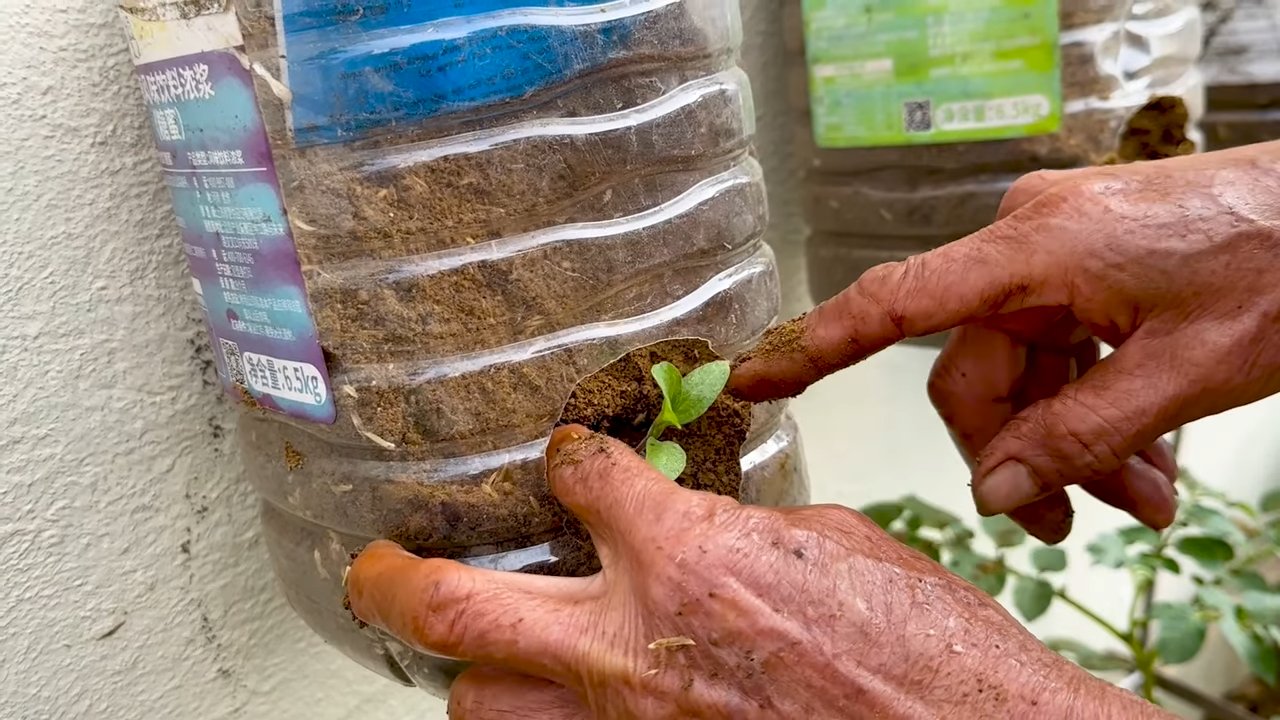Best Eggplant Cooking Method: Unlock the secrets to perfectly cooked eggplant every time! Have you ever struggled with bitter, mushy, or just plain unappetizing eggplant? I know I have! For years, I battled with this temperamental vegetable, trying recipe after recipe with disappointing results. But fear not, fellow food enthusiasts, because I’m about to share the ultimate guide to mastering the best eggplant cooking method, transforming this often-maligned ingredient into a culinary delight.
Eggplant, also known as aubergine in many parts of the world, boasts a rich history dating back thousands of years. Originating in India, it gradually made its way across Asia and eventually to Europe, where it was initially viewed with suspicion. Thankfully, we now recognize its versatility and nutritional value! But even with its global popularity, many home cooks still struggle to coax out its best flavors and textures.
That’s where this DIY guide comes in. I’ll walk you through proven techniques to eliminate bitterness, achieve that perfect creamy interior, and create a crispy, golden-brown exterior. Whether you’re grilling, roasting, frying, or baking, these simple tricks will elevate your eggplant dishes from mediocre to magnificent. Say goodbye to soggy eggplant and hello to delicious, restaurant-quality results! Trust me, once you master these methods, you’ll be adding eggplant to your weekly menu!

Der ultimative Guide für die perfekte Zubereitung von Auberginen
Auberginen, auch bekannt als Melanzani, können eine echte Herausforderung sein. Oft werden sie matschig, bitter oder einfach nur langweilig. Aber keine Sorge, ich zeige dir, wie du Auberginen jedes Mal perfekt zubereitest! Dieser Guide ist vollgepackt mit Tipps und Tricks, die ich über die Jahre gelernt habe, um sicherzustellen, dass deine Auberginen immer köstlich sind.
Warum Auberginen manchmal scheitern (und wie du das vermeidest)
Auberginen haben eine schwammartige Textur, die dazu neigt, viel Öl aufzusaugen. Das kann dazu führen, dass sie fettig und matschig werden. Außerdem enthalten sie Solanin, eine Substanz, die ihnen einen bitteren Geschmack verleihen kann. Aber keine Angst, es gibt einfache Lösungen für diese Probleme!
Die Vorbereitung ist der Schlüssel: Auberginen richtig vorbereiten
Die richtige Vorbereitung ist das A und O für eine gelungene Auberginenzubereitung. Hier sind die Schritte, die ich immer befolge:
- Auberginen auswählen: Wähle feste, glänzende Auberginen, die sich schwer für ihre Größe anfühlen. Vermeide Auberginen mit weichen Stellen oder braunen Flecken.
- Auberginen waschen: Wasche die Auberginen gründlich unter kaltem Wasser.
- Auberginen schneiden: Schneide die Auberginen je nach Rezept in Scheiben, Würfel oder längliche Stücke. Die Dicke der Stücke hängt davon ab, wie du sie zubereiten möchtest. Fürs Grillen bevorzuge ich dickere Scheiben, während ich für ein Auberginen-Curry eher Würfel verwende.
- Auberginen entwässern (optional, aber empfohlen): Das Entwässern hilft, die Bitterkeit zu reduzieren und die Auberginen weniger Öl aufnehmen zu lassen.
Auberginen entwässern: So geht’s
Das Entwässern ist ein wichtiger Schritt, besonders wenn du empfindlich auf den bitteren Geschmack von Auberginen reagierst. Hier sind zwei Methoden, die du ausprobieren kannst:
Methode 1: Salzen und Warten
- Auberginen salzen: Lege die geschnittenen Auberginen in ein Sieb oder auf ein mit Küchenpapier ausgelegtes Brett. Bestreue sie großzügig mit Salz. Das Salz zieht die Feuchtigkeit aus den Auberginen.
- Warten: Lasse die Auberginen mindestens 30 Minuten, besser noch 1 Stunde, ruhen. Du wirst sehen, wie sich kleine Wassertropfen auf der Oberfläche bilden.
- Auberginen abspülen: Spüle die Auberginen gründlich unter kaltem Wasser ab, um das Salz zu entfernen.
- Auberginen trocknen: Drücke die Auberginen vorsichtig mit Küchenpapier aus, um überschüssiges Wasser zu entfernen.
Methode 2: Beschweren
- Auberginen vorbereiten: Lege die geschnittenen Auberginen in ein Sieb oder auf ein mit Küchenpapier ausgelegtes Brett.
- Beschweren: Lege ein schweres Objekt (z.B. einen Teller mit Konservendosen) auf die Auberginen, um sie zu beschweren.
- Warten: Lasse die Auberginen mindestens 30 Minuten, besser noch 1 Stunde, ruhen.
- Auberginen trocknen: Drücke die Auberginen vorsichtig mit Küchenpapier aus, um überschüssiges Wasser zu entfernen.
Die besten Zubereitungsmethoden für Auberginen
Es gibt viele Möglichkeiten, Auberginen zuzubereiten. Hier sind meine Favoriten, mit detaillierten Anleitungen:
Auberginen braten: Knusprig und lecker
Gebratene Auberginen sind ein Klassiker und super vielseitig. Du kannst sie als Beilage, in Sandwiches oder als Teil eines Hauptgerichts verwenden.
- Auberginen vorbereiten: Schneide die Auberginen in ca. 1 cm dicke Scheiben. Entwässere sie nach einer der oben genannten Methoden.
- Pfanne vorbereiten: Erhitze eine großzügige Menge Öl (ich bevorzuge Olivenöl oder Rapsöl) in einer großen Pfanne bei mittlerer bis hoher Hitze. Das Öl sollte heiß genug sein, damit die Auberginen braten und nicht nur saugen.
- Auberginen braten: Lege die Auberginenscheiben in die heiße Pfanne. Achte darauf, dass die Pfanne nicht überfüllt ist, da die Auberginen sonst nicht richtig braten. Brate die Auberginen ca. 3-4 Minuten pro Seite, bis sie goldbraun und weich sind.
- Auberginen würzen: Nimm die gebratenen Auberginen aus der Pfanne und lege sie auf ein mit Küchenpapier ausgelegtes Brett, um überschüssiges Öl abzutropfen. Würze sie sofort mit Salz, Pfeffer und anderen Gewürzen deiner Wahl (z.B. Knoblauchpulver, Paprikapulver, Kräuter der Provence).
- Servieren: Serviere die gebratenen Auberginen warm.
Auberginen grillen: Sommerlicher Genuss
Gegrillte Auberginen sind perfekt für den Sommer. Sie bekommen ein rauchiges Aroma und eine schöne Textur.
- Auberginen vorbereiten: Schneide die Auberginen in ca. 1 cm dicke Scheiben. Entwässere sie nach einer der oben genannten Methoden.
- Grill vorbereiten: Heize den Grill auf mittlere Hitze vor.
- Auberginen bestreichen: Bestreiche die Auberginenscheiben mit Olivenöl und würze sie mit Salz, Pfeffer und anderen Gewürzen deiner Wahl.
- Auberginen grillen: Lege die Auberginenscheiben auf den Grill. Grille sie ca. 3-4 Minuten pro Seite, bis sie weich sind und Grillstreifen haben.
- Servieren: Serviere die gegrillten Auberginen warm. Du kannst sie auch mit einem Dip wie Hummus oder Tzatziki servieren.
Auberginen backen: Eine gesunde Alternative
Gebackene Auberginen sind eine gesunde Alternative zum Braten, da sie weniger Öl aufnehmen.
- Auberginen vorbereiten: Schneide die Auberginen in ca. 1 cm dicke Scheiben oder Würfel. Entwässere sie nach einer der oben genannten Methoden.
- Ofen vorheizen: Heize den Ofen auf 200°C (Ober-/Unterhitze) vor.
- Auberginen bestreichen: Bestreiche die Auberginenscheiben oder -würfel mit Olivenöl und würze sie mit Salz, Pfeffer und anderen Gewürzen deiner Wahl.
- Auberginen backen: Lege die Auberginen auf ein mit Backpapier ausgelegtes Backblech. Backe sie ca. 20-25 Minuten, bis sie weich und leicht gebräunt sind. Wende sie nach der Hälfte der Backzeit.
- Servieren: Serviere die gebackenen Auberginen warm. Du kannst sie als Beilage, in Salaten oder als Teil eines Hauptgerichts verwenden.
Auberginen pürieren: Cremig und vielseitig
Auberginenpüree ist eine tolle Basis für Dips, Saucen oder Aufstriche.
- Auberginen vorbereiten: Steche die Auberginen mehrmals mit einer Gabel ein.
- Auberginen backen oder grillen: Backe die Auberginen im Ofen bei 200°C (Ober-/Unterhitze) für ca. 45-60 Minuten, bis sie weich sind und die Haut schrumpelig ist. Alternativ kannst du sie auch auf dem Grill grillen, bis sie weich sind und die Haut verbrannt ist.
- Auberginen abkühlen lassen

Conclusion
So, there you have it! Mastering the art of cooking eggplant doesn’t have to be a daunting task. By employing this simple yet effective salting and pressing method, you’re not just preparing eggplant; you’re unlocking its full potential. You’re transforming a potentially bitter and spongy vegetable into a culinary delight that’s ready to absorb flavors and deliver a satisfying texture.
Why is this DIY trick a must-try? Because it addresses the two biggest complaints people have about eggplant: bitterness and sogginess. The salting process draws out excess moisture, concentrating the eggplant’s natural sweetness and creating a firmer texture. Pressing further removes moisture, ensuring that your eggplant browns beautifully and doesn’t become a greasy mess when cooked. This method truly elevates your eggplant dishes, making them more enjoyable and flavorful.
But don’t stop there! This is just the foundation. Once you’ve mastered the basic salting and pressing technique, the possibilities are endless. Consider these variations to tailor the process to your specific needs and preferences:
* Herb-Infused Salt: Add dried herbs like thyme, rosemary, or oregano to your salt for an extra layer of flavor that will subtly infuse the eggplant.
* Garlic Salt: A touch of garlic salt can add a savory depth to your eggplant, perfect for Mediterranean-inspired dishes.
* Spice Rub: After pressing, lightly coat the eggplant slices with a spice rub of your choice before cooking. Think smoked paprika, chili powder, or cumin for a Southwestern flair.
* Different Pressing Methods: While the plate and weight method is effective, you can also use a colander and a heavy bowl, or even a dedicated tofu press for larger batches.
* Eggplant Cut Variations: This method works for eggplant slices, cubes, or even halved eggplants. Adjust the salting and pressing time accordingly.This method is particularly effective for dishes like eggplant parmesan, baba ghanoush, ratatouille, and grilled eggplant sandwiches. Imagine sinking your teeth into a perfectly cooked eggplant parmesan, where each slice is tender, flavorful, and not at all soggy. Or picture a creamy, smoky baba ghanoush made with eggplant that’s been properly prepared to eliminate any bitterness.
We wholeheartedly encourage you to try this DIY trick for the best eggplant cooking method. It’s a game-changer that will transform your relationship with this versatile vegetable. Don’t be intimidated by the extra step; the results are well worth the effort.
Once you’ve tried it, we’d love to hear about your experience! Share your photos, recipes, and tips in the comments below. Let’s build a community of eggplant enthusiasts who are passionate about unlocking the full potential of this amazing ingredient. What variations did you try? What dishes did you create? What were the results? Your feedback will help others discover the joy of perfectly cooked eggplant. So go ahead, give it a try, and let us know what you think!
Frequently Asked Questions (FAQ)
Why do I need to salt and press eggplant?
Salting and pressing eggplant serves two crucial purposes: it removes excess moisture and reduces bitterness. Eggplant naturally contains a high water content, which can lead to a soggy texture when cooked. Salting draws out this moisture through osmosis. Additionally, some varieties of eggplant contain compounds that contribute to a bitter taste. Salting helps to break down these compounds, resulting in a sweeter, more palatable flavor. Pressing after salting further removes the drawn-out moisture, ensuring a firmer texture and better browning during cooking.
How much salt should I use?
A general guideline is to use about 1 teaspoon of salt per pound of eggplant. However, this can vary depending on the size and thickness of your eggplant slices or cubes. The goal is to evenly coat the eggplant with salt, ensuring that it draws out moisture effectively. Don’t be afraid to use a little more if needed, but remember that you’ll be rinsing the eggplant later to remove excess salt.
How long should I salt the eggplant?
The ideal salting time is typically between 30 minutes and 1 hour. For thicker slices or larger pieces of eggplant, you may want to extend the salting time to 1.5 hours. The longer the eggplant sits with salt, the more moisture will be drawn out. However, avoid salting for longer than 2 hours, as this can make the eggplant overly salty.
What’s the best way to press the eggplant?
The simplest method is to place the salted eggplant slices or cubes in a colander or on a plate lined with paper towels. Then, place another plate or cutting board on top of the eggplant and weigh it down with a heavy object, such as a can of beans, a bag of flour, or a heavy pot. You can also use a dedicated tofu press for more efficient pressing. The key is to apply consistent pressure to squeeze out the excess moisture.
How long should I press the eggplant?
Pressing the eggplant for at least 30 minutes is recommended. For best results, press for 1 hour. This allows ample time for the moisture to be expelled. You’ll notice a significant amount of liquid accumulating in the colander or on the plate.
Do I need to rinse the eggplant after salting and pressing?
Yes, rinsing the eggplant is essential to remove excess salt. After pressing, rinse the eggplant thoroughly under cold running water. Gently pat the eggplant dry with paper towels before cooking. This step prevents the eggplant from being overly salty and ensures that it browns properly.
Can I skip the salting and pressing step?
While you can technically skip the salting and pressing step, you’ll likely end up with a less desirable result. The eggplant may be bitter, soggy, and prone to absorbing too much oil during cooking. Salting and pressing significantly improves the texture and flavor of eggplant, making it a worthwhile step for most recipes.
What if I don’t have time to salt and press the eggplant?
If you’re short on time, you can try a quick salting method. Sprinkle the eggplant with salt and let it sit for just 15-20 minutes before pressing. While this won’t be as effective as a longer salting period, it can still help to reduce some of the moisture and bitterness. Alternatively, look for varieties of eggplant that are known to be less bitter, such as Japanese eggplant or Italian eggplant.
Can I use this method for all types of eggplant?
Yes, this method works well for most types of eggplant, including globe eggplant, Italian eggplant, Japanese eggplant, and Chinese eggplant. However, some varieties may require slightly different salting and pressing times. For example, Japanese eggplant tends to be less bitter and may require a shorter salting time.
How do I know when the eggplant is properly cooked?
Eggplant is properly cooked when it is tender and easily pierced with a fork. The color should be a rich golden brown. Avoid overcooking the eggplant, as it can become mushy. The cooking time will vary depending on the cooking method and the size of the eggplant pieces.




Leave a Comment